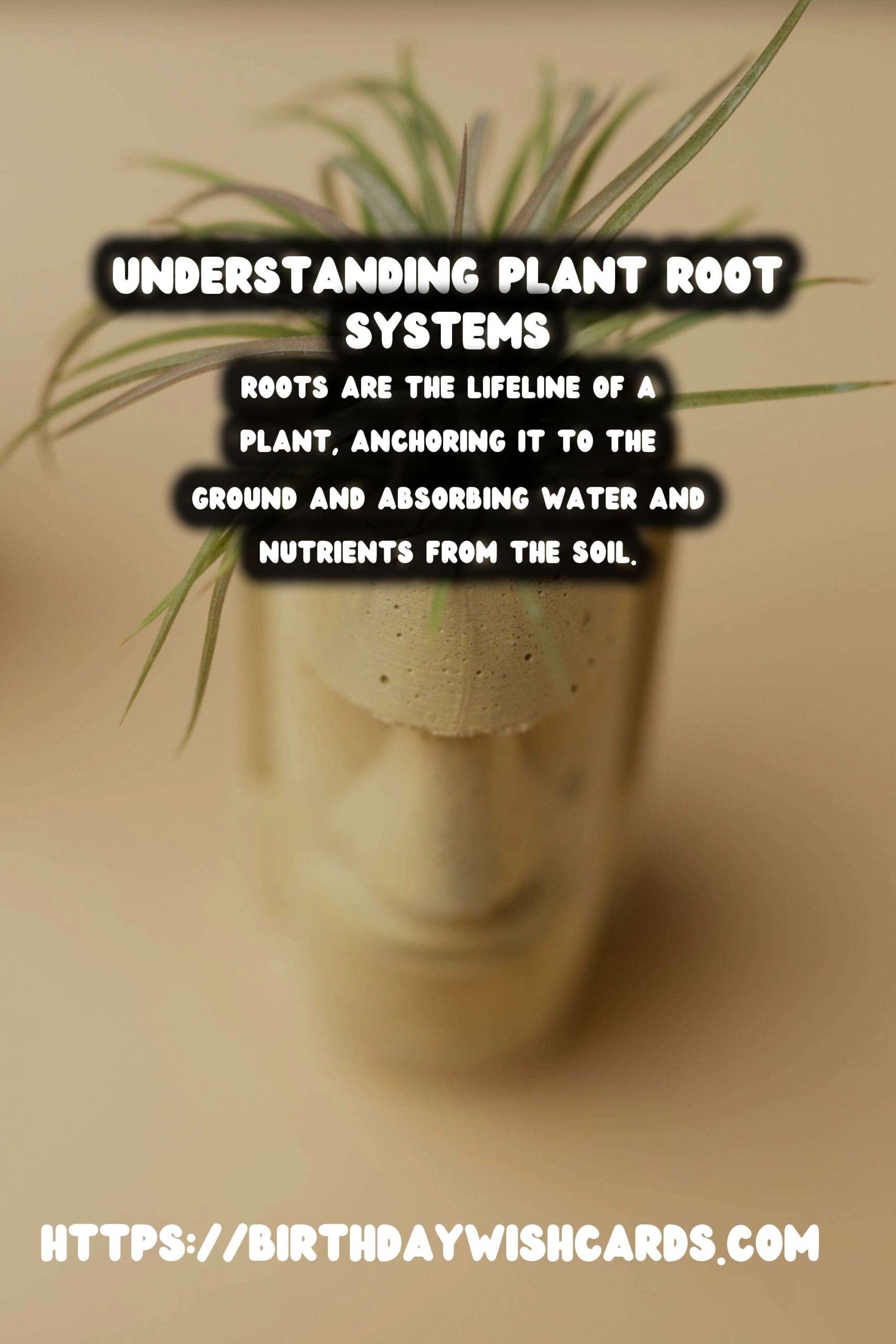
Plants are an essential part of our ecosystem, providing oxygen, food, and beauty to our environment. One of the critical aspects of plant care is understanding their root systems, which play a vital role in their growth and survival. Overwatering is a common issue that can severely impact plant health, leading to root rot and other detrimental conditions.
The Importance of Plant Root Systems
Roots are the lifeline of a plant, anchoring it to the ground and absorbing water and nutrients from the soil. They also store food and nutrients, aiding in plant growth and development. There are two primary types of root systems: taproot and fibrous. The taproot system features a single, thick main root with smaller lateral branches, while the fibrous root system consists of numerous thin roots spreading out from the stem.
Common Causes of Overwatering
Overwatering occurs when plants receive more water than they can absorb, leading to waterlogged soil and suffocating roots. This issue can arise from watering too frequently, poor soil drainage, or using pots without drainage holes. Overwatering is often more damaging than underwatering, as it can lead to root rot, a condition where roots decay and die due to excess moisture and lack of oxygen.
Signs of Overwatered Plants
Identifying overwatered plants is crucial to prevent further damage. Common signs include yellowing leaves, wilting despite wet soil, and a musty or moldy smell coming from the soil. Roots may appear black, mushy, or slimy, indicating root rot. Additionally, overwatered plants may exhibit stunted growth and leaf drop.
Preventing Overwatering
Preventing overwatering begins with understanding the specific watering needs of your plants. Different plants require varying amounts of water, so it’s essential to research and tailor your watering schedule accordingly. Ensure pots have adequate drainage holes, and use well-draining soil to facilitate excess water runoff. It’s also beneficial to allow the topsoil to dry out between waterings, ensuring roots receive the necessary oxygen.
Improving Soil Drainage
Improving soil drainage is a key step in preventing overwatering. Adding organic matter such as compost or perlite to soil can enhance its structure and drainage capabilities. Raised garden beds and the use of porous pots can also help improve drainage. Regularly aerating the soil by gently loosening it with a fork or aerator can prevent compaction and promote healthy root growth.
Conclusion
Understanding plant root systems and the risks of overwatering is crucial for maintaining healthy plants. By recognizing the signs of overwatering and implementing preventive measures, gardeners can ensure their plants thrive. Proper watering techniques, improved soil drainage, and attentive care are all part of a holistic approach to plant health.
Roots are the lifeline of a plant, anchoring it to the ground and absorbing water and nutrients from the soil. Overwatering occurs when plants receive more water than they can absorb, leading to waterlogged soil and suffocating roots. Identifying overwatered plants is crucial to prevent further damage. Preventing overwatering begins with understanding the specific watering needs of your plants. Improving soil drainage is a key step in preventing overwatering. 
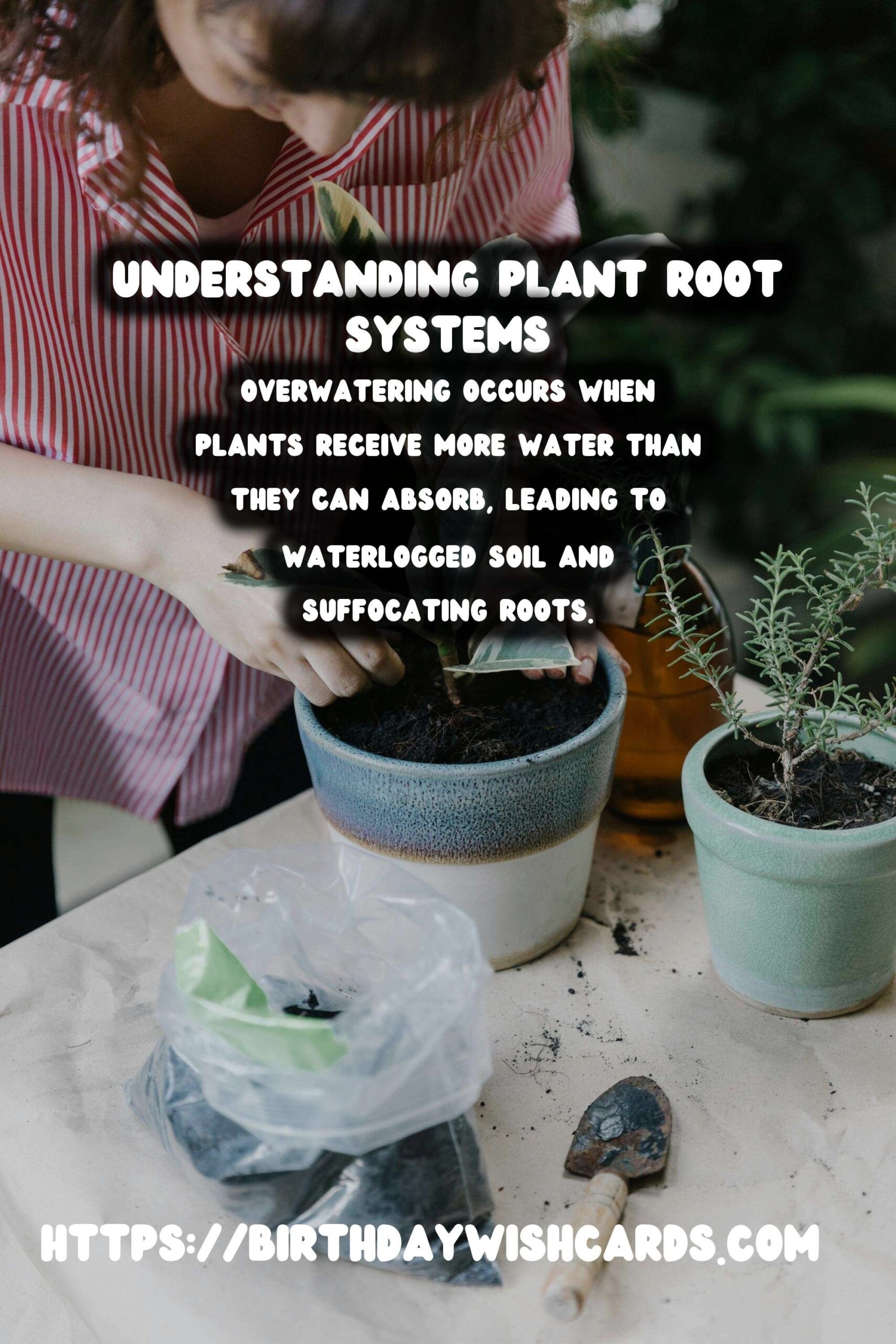
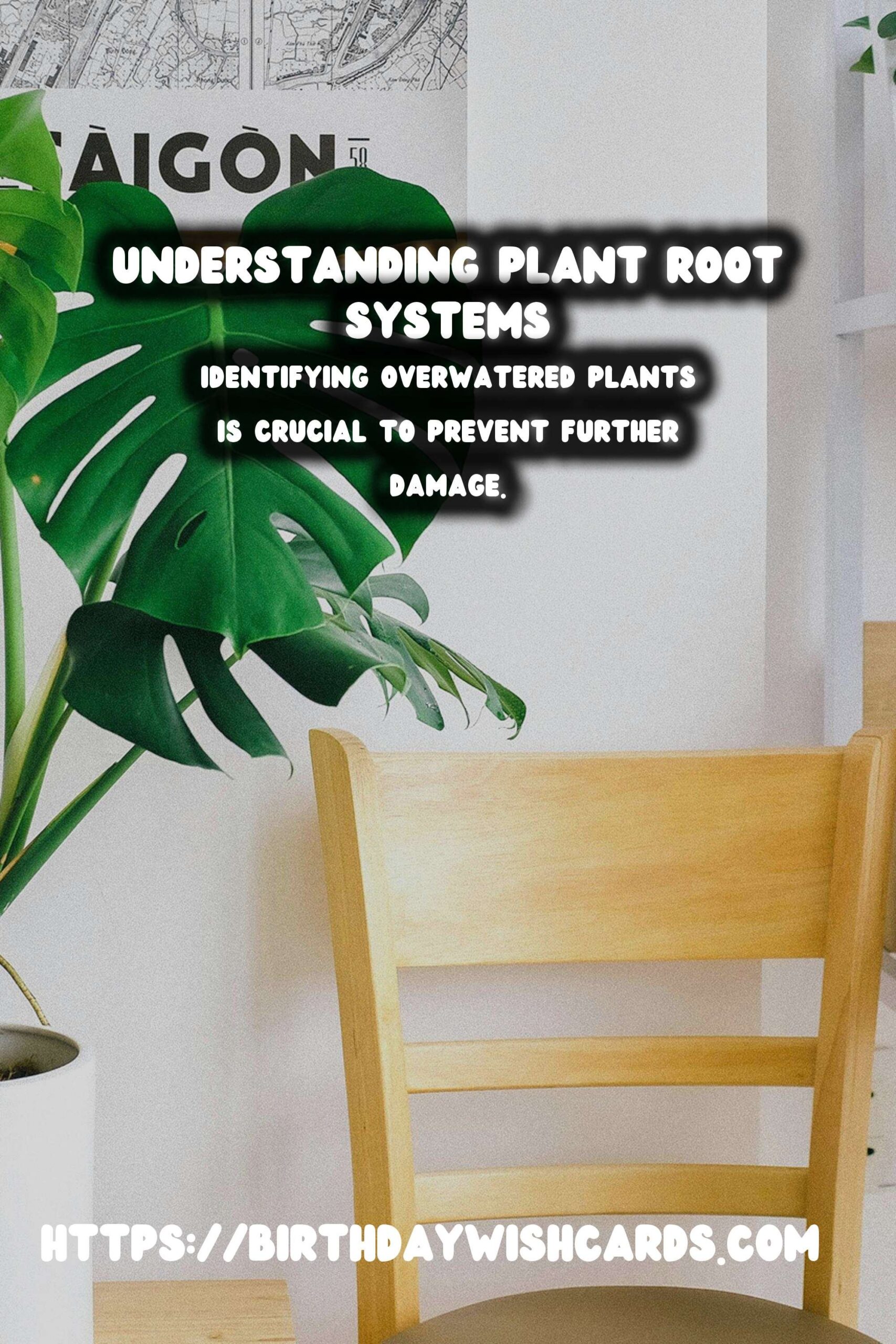
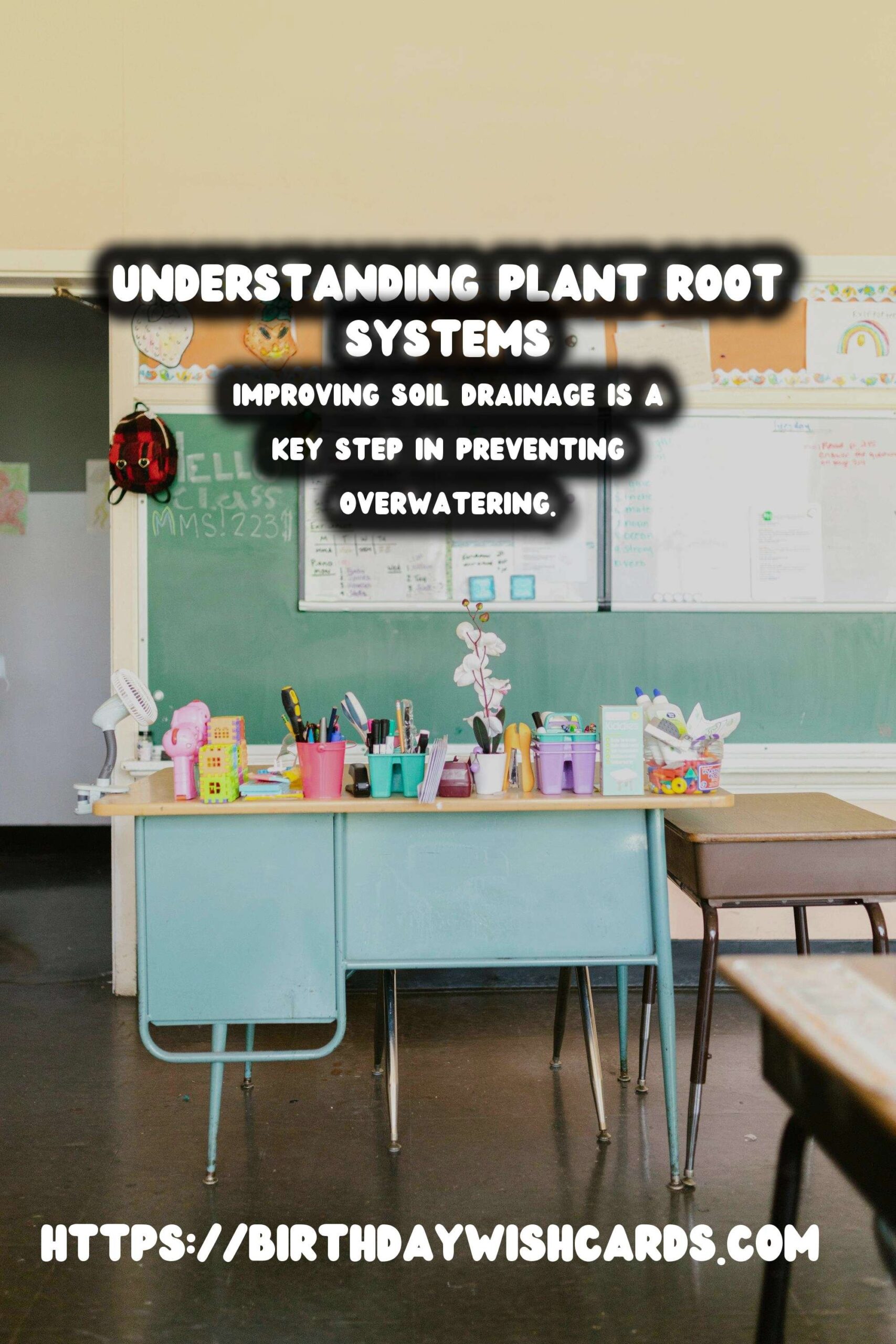
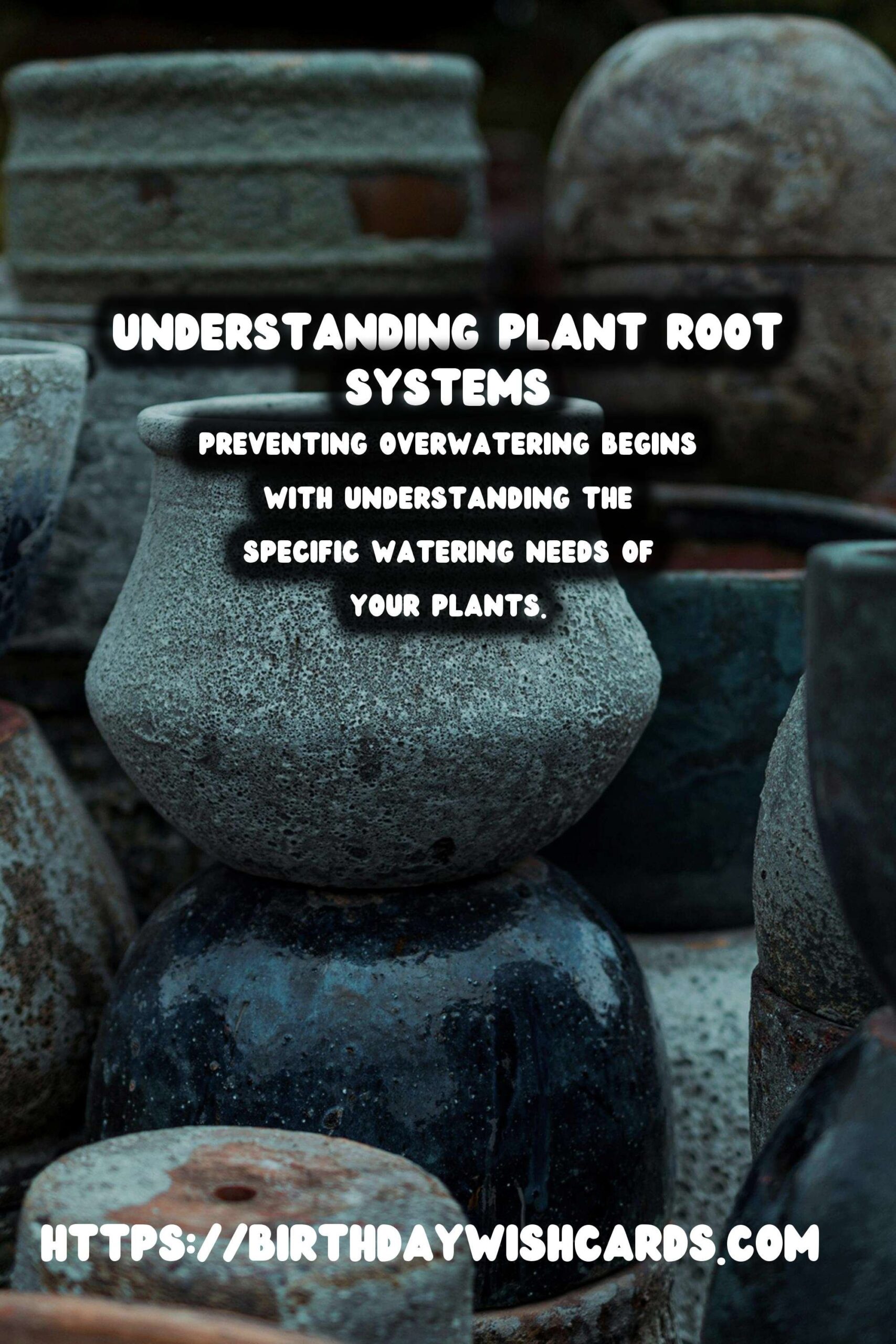
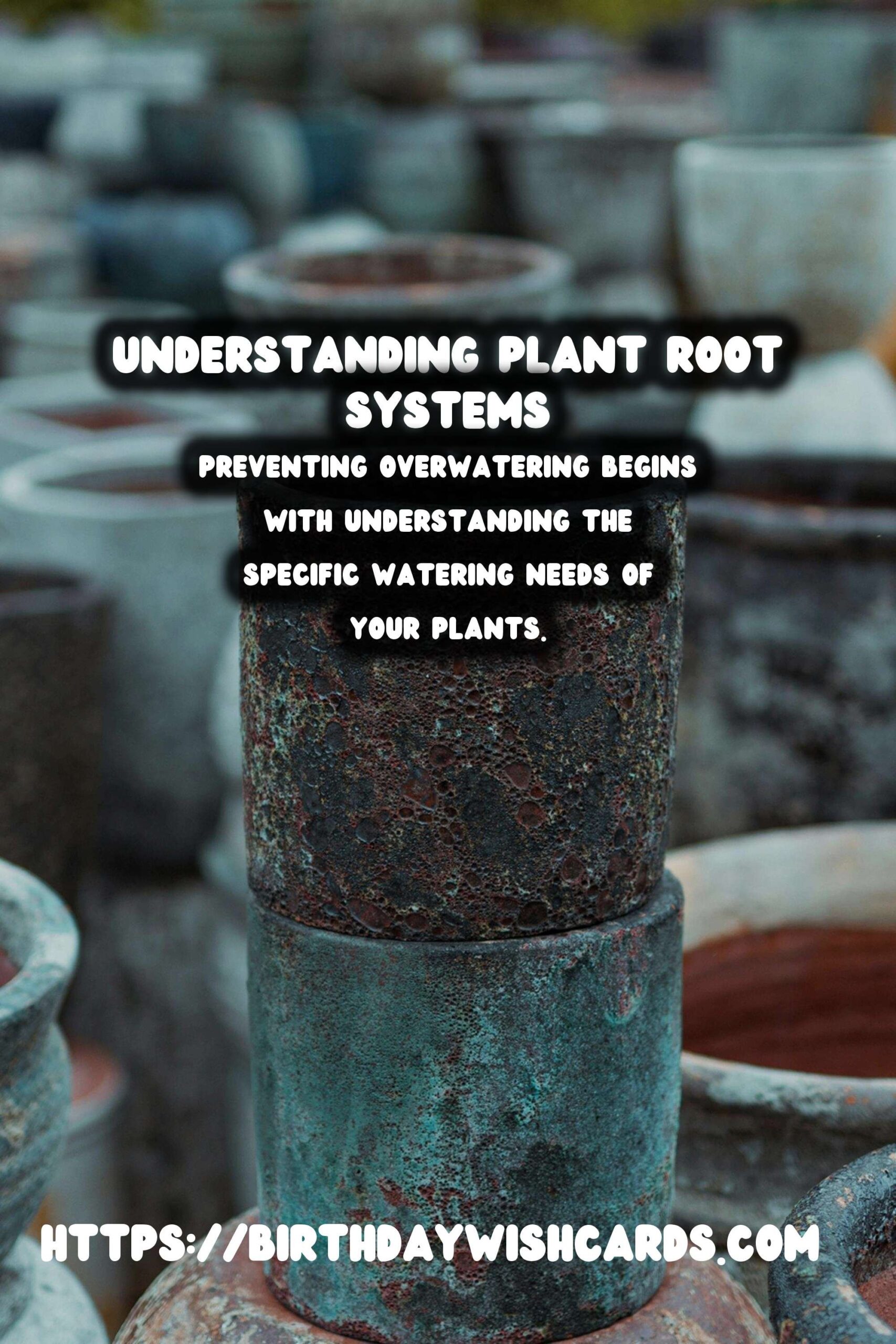
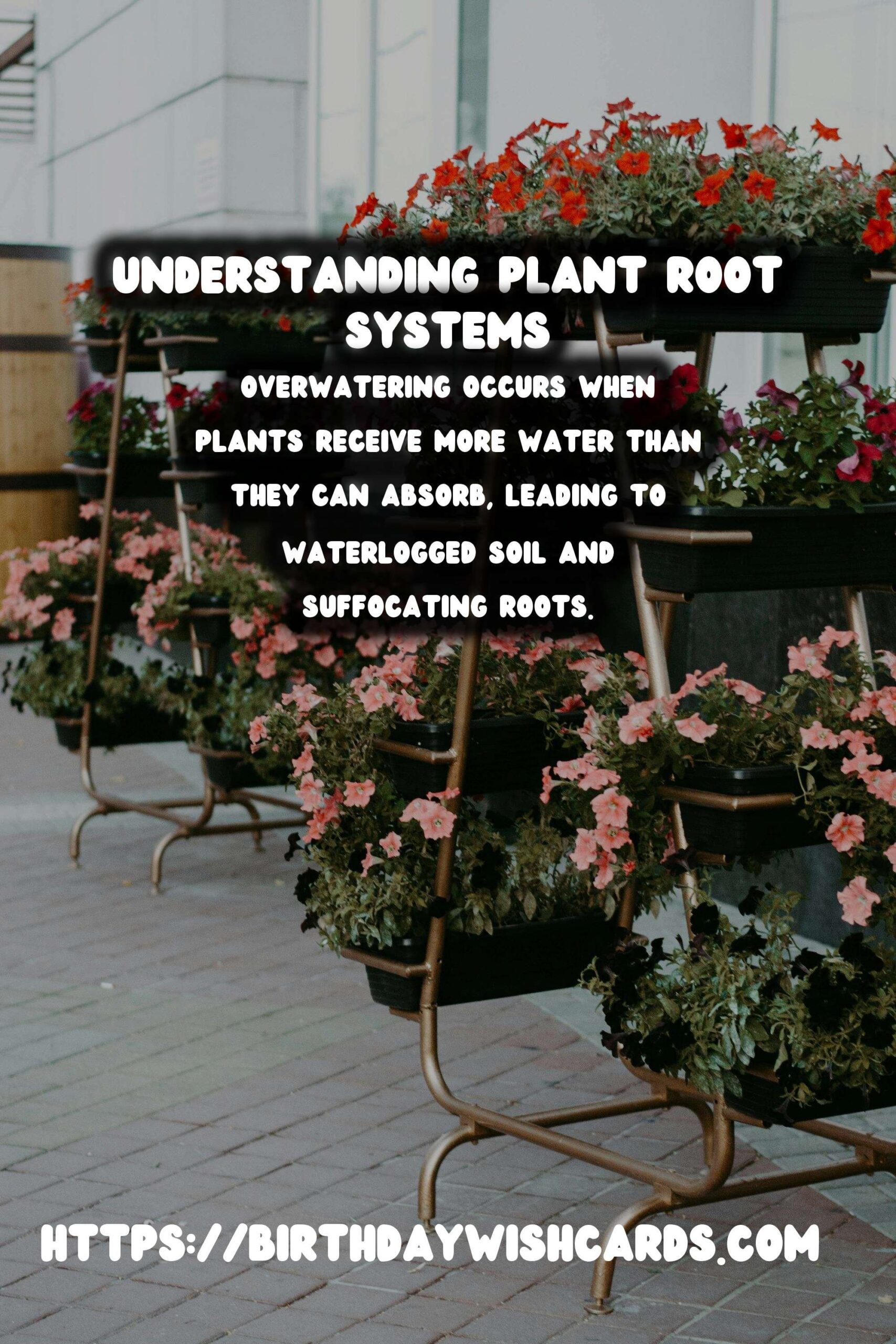
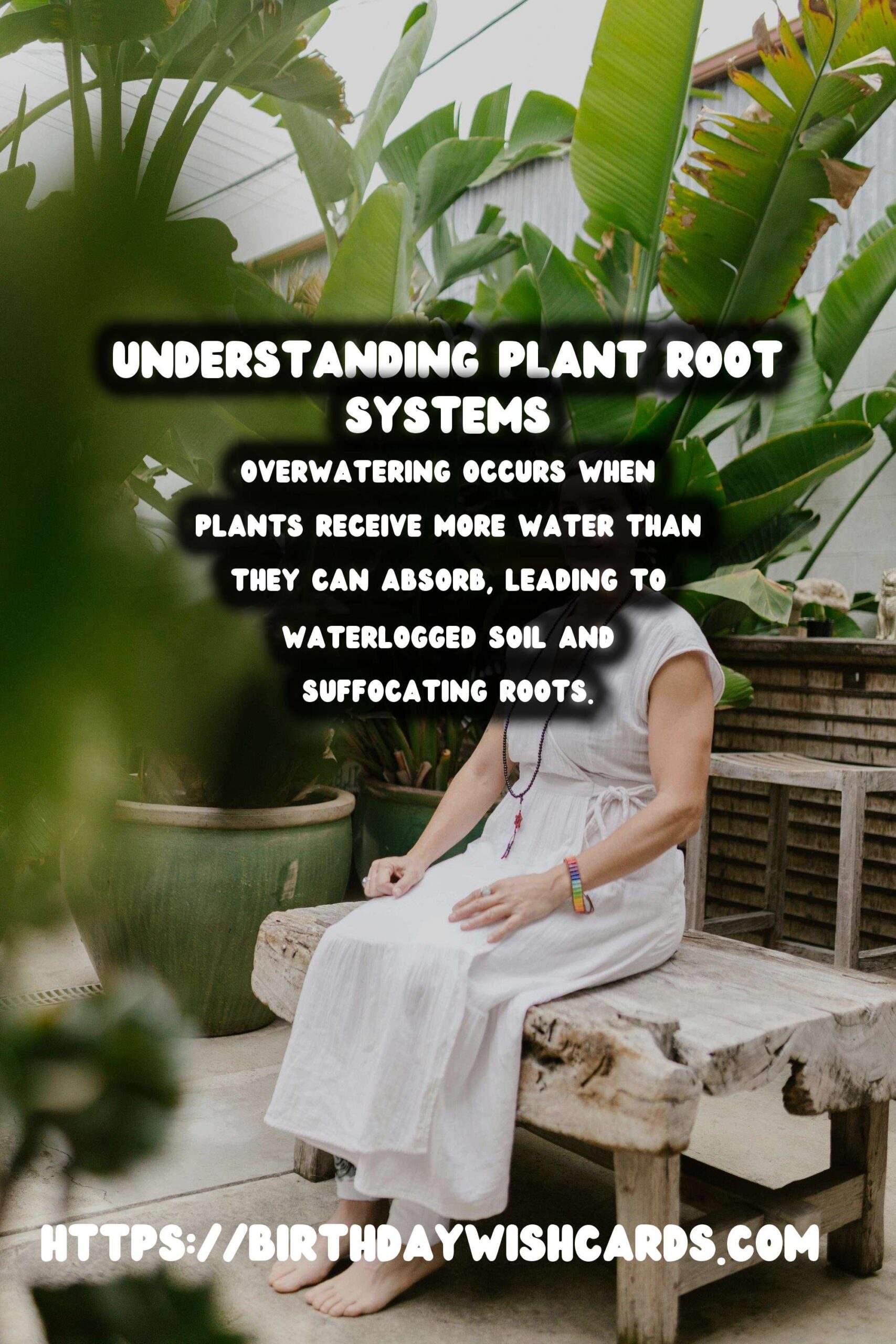
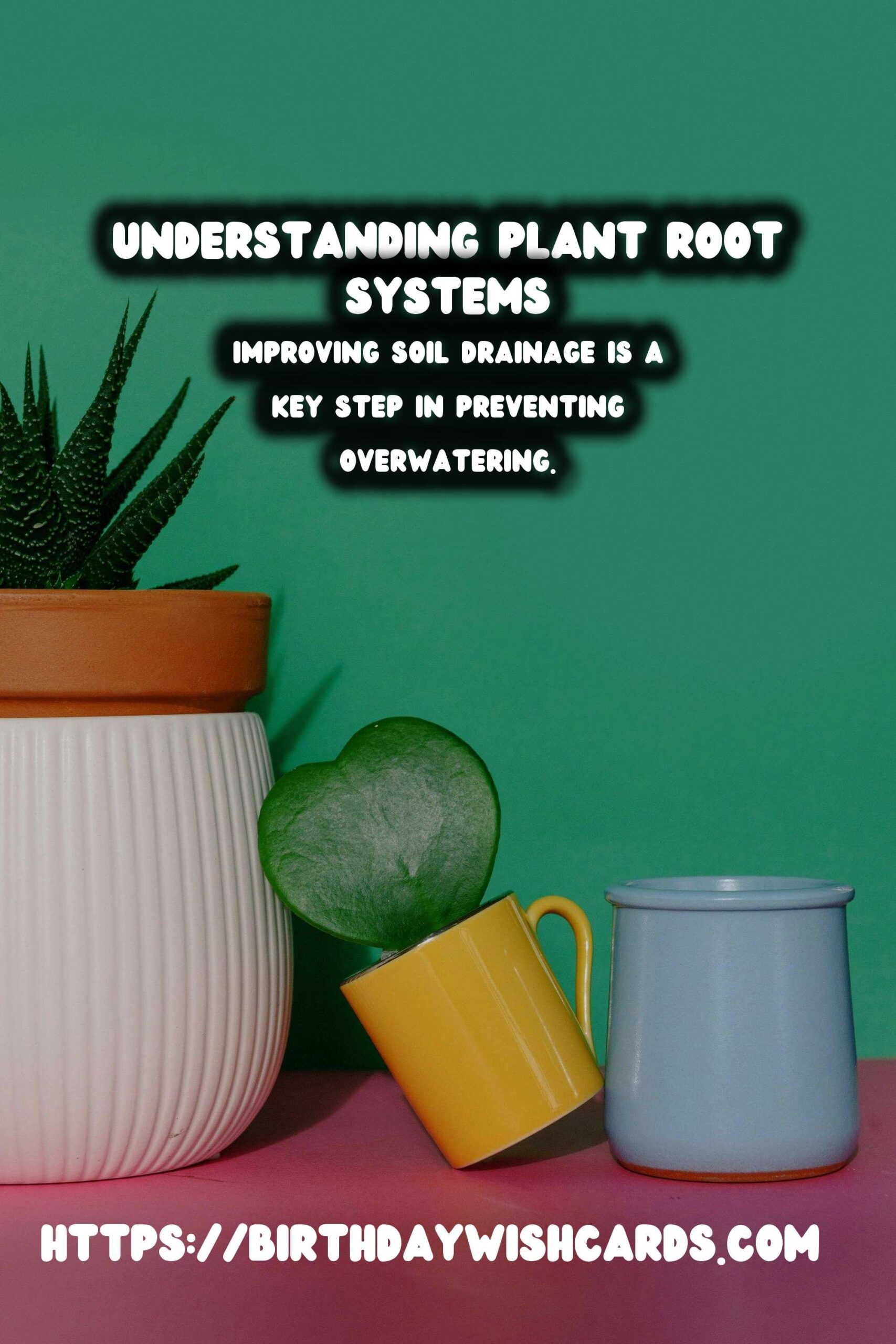
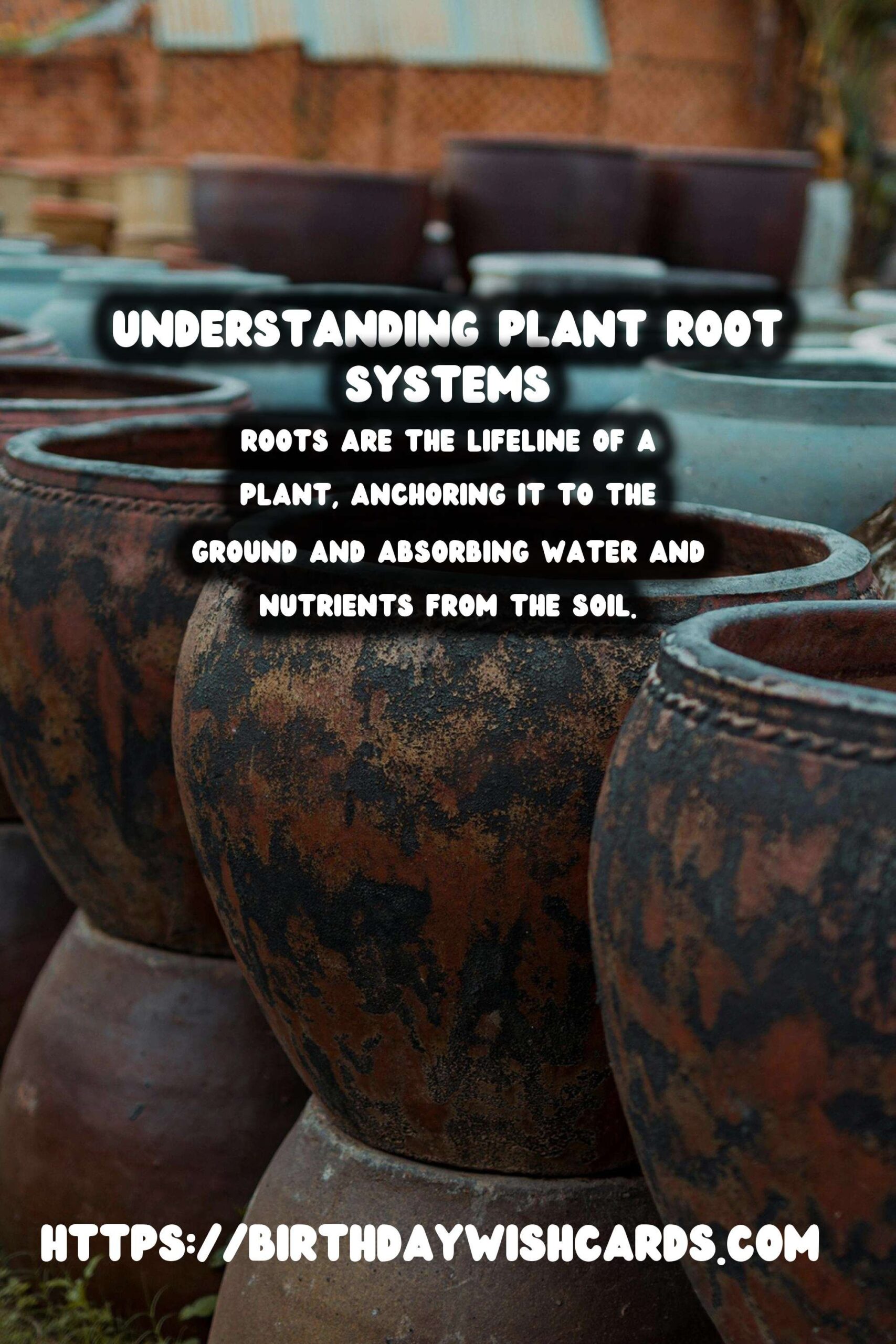
#PlantCare #GardeningTips #OverwateringPrevention #RootSystems



